Philosophical three-year-olds: the P4C journey of Oaklands Nursery
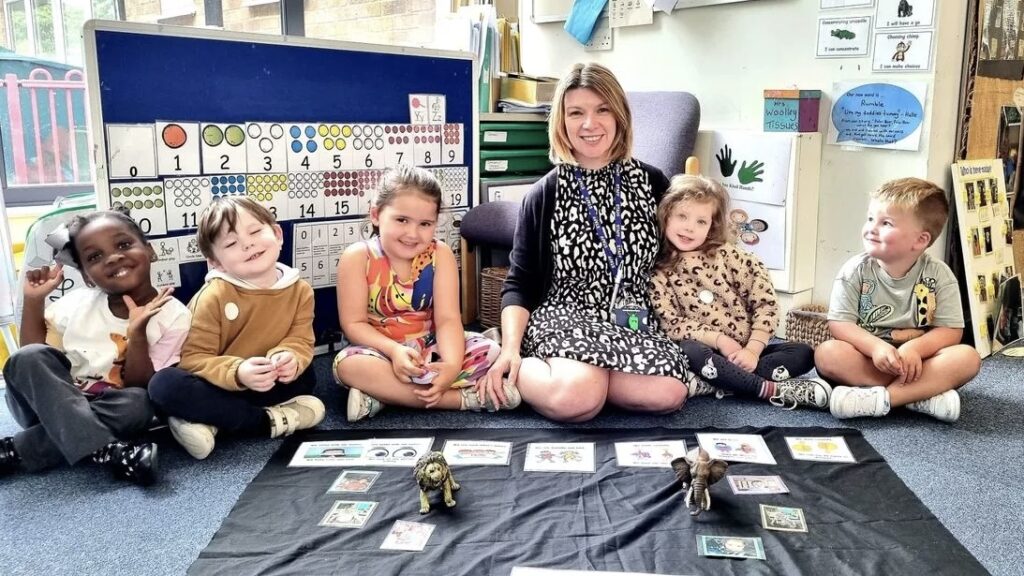
One of the most satisfying experiences I have had in my years of being a Philosophy for Children (P4C) trainer has been watching the way in which teachers at Oaklands Nursery in Newcastle-under-Lyme have adopted the practice and made it their own.
Right from the beginning of their journey in 2018, the wonderful practitioners at Oaklands, led first by Nadine Key and latterly by Claire Smith, have been able to see how the pedagogy of P4C adds value to their existing (and Outstanding!) early years practice. The setting’s 2023 Ofsted report includes the lines:
‘Children are thoughtful thinkers. They have the words and confidence to share their own ideas, feelings and questions. Children show great focus and enjoyment in these sessions. They come up with many interesting and individual thoughts on a range of subjects. They transfer these to their learning across the days and weeks. Children know how to express and follow their own beliefs. They learn to understand and respect that not everyone will share the same opinion. They understand that it is fine to be different to, or think differently to, a friend‘.
This is testament to the hard work that has gone into the development of P4C over the last five years. During the summer, I visited the nursery to talk with Claire Smith about Oaklands’ P4C journey. Here is an edited version of our conversation:
How did Oaklands come to P4C in the first place, and why did you come to it?
We were associate members of the Societas Trust and were invited to attend the Level 1 training [The Societas Trust undertook Trust-wide training in 2018], and I think for us it was just an obvious best-fit with the existing practice that we already had in place – with the questioning, the sustained shared thinking, the love of story and the very child-led pedagogy that we use. We saw it as an opportunity to upskill the staff and enhance their ability to facilitate learning.
Not everyone is able to see that connection between P4C and Early Years practice immediately. Why were you able to grasp it so quickly?
The Level 1 training we did [with SAPERE trainer Diane Swift] was so visual; it gave people both an active and a passive voice. Even as an adult, if you were reluctant to speak in the circle you still had an opportunity to express your opinion just by showing a voting stick or moving your picture to indicate your choice.
And that’s what you went on to do with the children, isn’t it?
Absolutely. Children are very able to do the same thing, and seeing how simple it was for us as adults helped us to make links to our existing pedagogy around child choice. It excited the staff in terms of how much we could get out of the children even at three years old; it’s easy to underestimate three-year-olds, and actually they are quite deep thinkers. They see things in a different way. It was quite exciting and impactful for us immediately in terms of how much we were getting back from the children, and how much they enjoyed the community aspect.
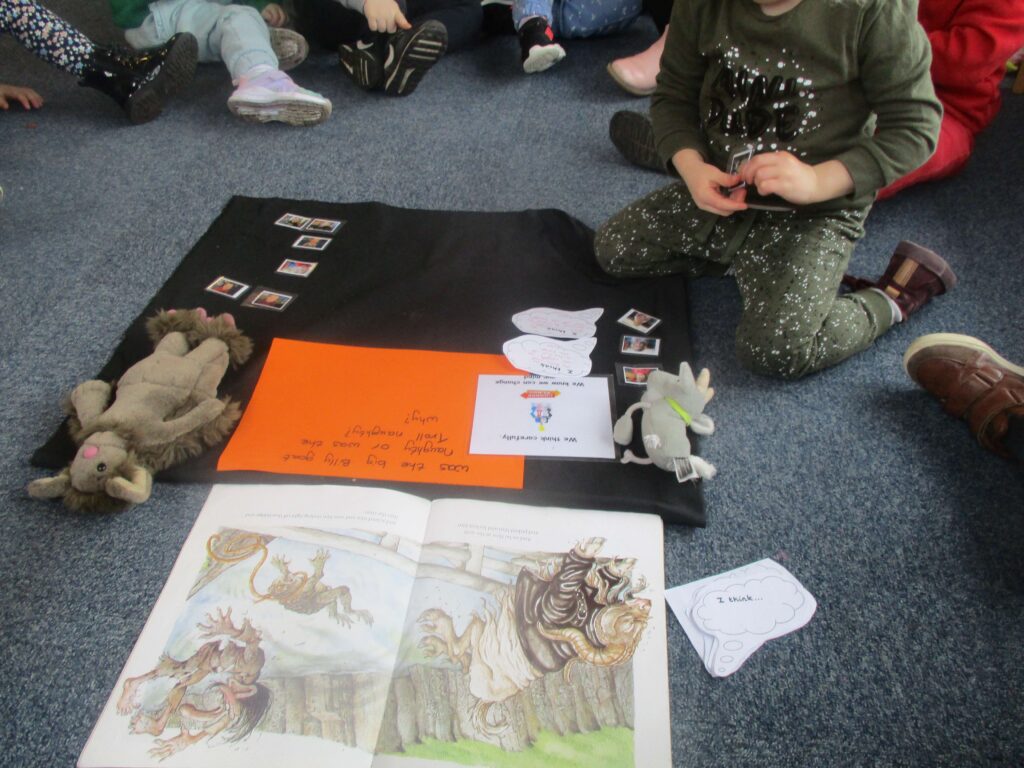
Were there any particular moments that you remember from those early days?
I think probably the level of justification that came from children that you wouldn’t expect, and the fact that it brought a love of stories back again for children who still don’t access stories unless they are on an i-pad. We had a series of sessions around Jack and the Beanstalk that went on for weeks – we had the kind of justification where children would say that even though he (Jack) shouldn’t take the giant’s money, he was hungry, he was trying to look after his mum, and the giant already had lots of things so it didn’t matter if he didn’t have the money any more. It linked to our work on British Values and democracy and our ethos of independent and creative thinkers – it helps us with all those things we are trying to achieve with children before they go to Reception.
What would you say to people who say that these children are too young to think philosophically?
I would say that you are over-thinking the word philosophical. Actually, to make connections that allow children to say, ‘This is fairness; this is kindness; this is greed; this is bravery,’ extends their vocabulary and helps them to realise that these concepts ‘are connected to different things that I am’. When you break it down like that there are a lot of three-year-old philosophical thinkers out there.
I seem to remember you saying that introducing concepts such as the ones you just listed was transformational in terms of the quality of conversations you were having. Have I remembered that rightly?
Absolutely – it challenges the children to think and make connections. You talk about the owls in Owl Babies being brave, but when have you ever been brave? What do you consider is a brave thing to do? Do we always have to be brave? Children think that they are brave when they go to the dentist or fall off their bike, but actually they are brave in lots of things they do every day – like speaking in our circle. It’s easy to under-value those simple things that make a philosophical conversation what it is, but also tie in to children’s experience and, in this case, their understanding of what bravery really is. Using concept stretchers, like arranging acts from most brave to least brave, deepens the thinking even further.
All this happened fairly quickly for you. What have you learned over the years – how has your practice adapted?
We tie P4C in with our PSE curriculum; the idea of being caring, collaborative, creative and critical ties in really well. We use our Thinking Mat as an indication that we are a community together and we use the visual cue cards to encourage good listening, good sitting, using each other’s names and making sure that everyone in the circle has a turn. We use these skills explicitly in a P4C session, but also constantly in the wider curriculum.
You mention the 4Cs there. Could you say more about the ways in which you build 4Cs skills?
We have children who are on speech and language programmes, who have EAL or have SEND and we use those visual representations of the skills to support them. We use a thumbs up to indicate agreement and thumbs down to indicate disagreement, reinforcing that you don’t have to think the same as everybody else. Later in the year we teach them how to disagree agreeably. The 4Cs tie in nicely with both the PSE curriculum and with the Characteristics of Effective Learning; persevering, trying, making connections – P4C complements all of those things so nicely. We have Concentrating Crocodiles, Linky Snakes and Persevering Parrots, which are all incorporated in the 4Cs thinking that comes with P4C.
What are the children’s attitudes to the sessions. Obviously this is a generalisation, but do they enjoy the P4C activities?
Yeah, I think they do. It takes a little bit of time to embed those early skills – to play special games as we are getting to know one another, to learn to sit in a circle, to roll a ball to each other including everyone and using people’s names and so on. Then we move on to simple choices like ‘Would you rather be chased by a bear or kissed by a monkey?’ which gets them thinking and gets them engaged – it gets those cogs ticking and those conversations going. As soon as they see their picture go down or their voting stick go down next to their choice there is an approval – a validation – of what they are saying whether that’s what other people in the circle think or not, and I think that’s really affirming and ties in with British Values, citizenship etc. – it’s all there at the age of three.
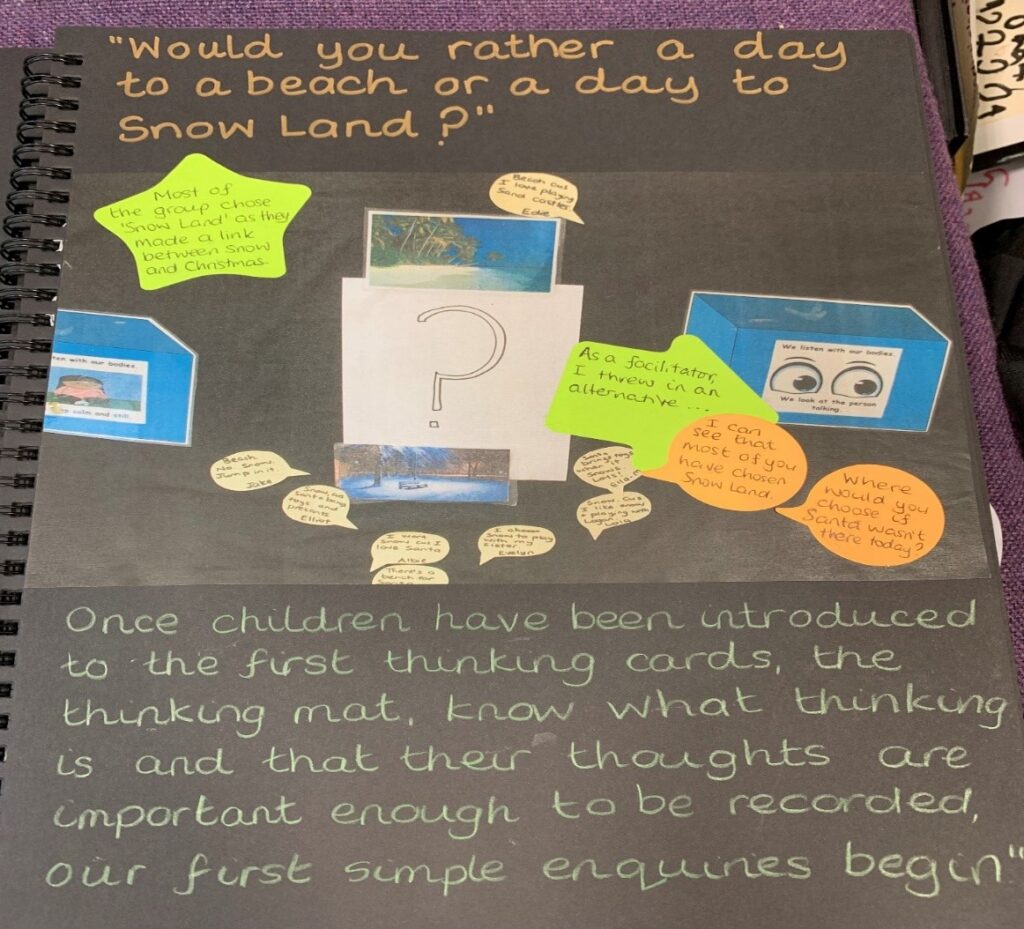
Have all the teachers enjoyed P4C? There must have been some resistance.
We are lucky to have an experienced group who have been together a long time and know how each other work. We enjoy sharing our experiences; we can all be reading the same story, and it can go off in different directions and it’s always really interesting to share that information and see how the themes have been developed in different ways. Over time you build a really nice bank of activities, resources and experience which saves an awful lot of time. We have one member of staff who really excels at P4C and she has done the Level 2A and 2B training with me, but everyone’s facilitation skills and confidence with sustained shared thinking has grown and grown and grown. P4C is on the School Development Plan, and it is a part of everybody’s CPD – it continues to upskill us and I wouldn’t say that there has been any resistance to it. Even the staff in the two-year-old room really enjoy their ‘philosophical moments’!
So I’m guessing that this is something that you would recommend to other nurseries?
I absolutely would. In terms of speech and language and vocabulary extension, and bringing back the love of story and thinking about the key concepts that come with those stories, it’s a massive part of Ofsted and a massive part of our effort to get children back into books – I’d absolutely champion it for those reasons.
I have to ask you about your recent Ofsted visit…
Ofsted complemented us on the children’s level of vocabulary, the level of questioning incorporated into our circle time, the level of the listening and attention that the children held, and the way that the older children were open to changing their point of view based on somebody else’s input; at the age of three and four you don’t really expect that. P4C is a huge part of how embedded the literacy, the language and the oracy of children are in out practice.
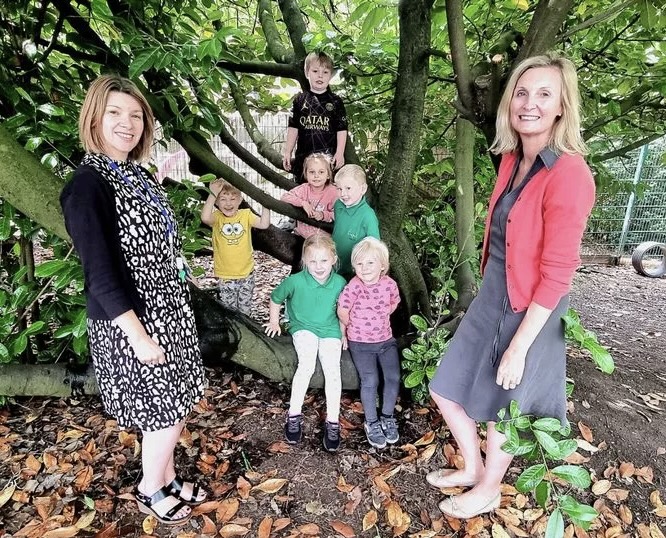
with children from Oaklands Nursery (Image: StokeonTrentLive)
Oaklands have recently received a SAPERE Silver Award, with the reviewer commenting that their application provided an ‘inspiring example of the potential of P4C in the Early Years‘. I couldn’t agree more; I have learned so much from this setting, and I very much look forward to seeing how their practice develops. You can find out more about P4C by visiting the SAPERE website. Better still, the retiring headteacher at Oaklands, Nadine Key, will be leading a morning workshop on P4C in the Early Years on the morning of December 8th in Stoke-on-Trent. You can reserve a place by mailing admin@southstar.org.uk.


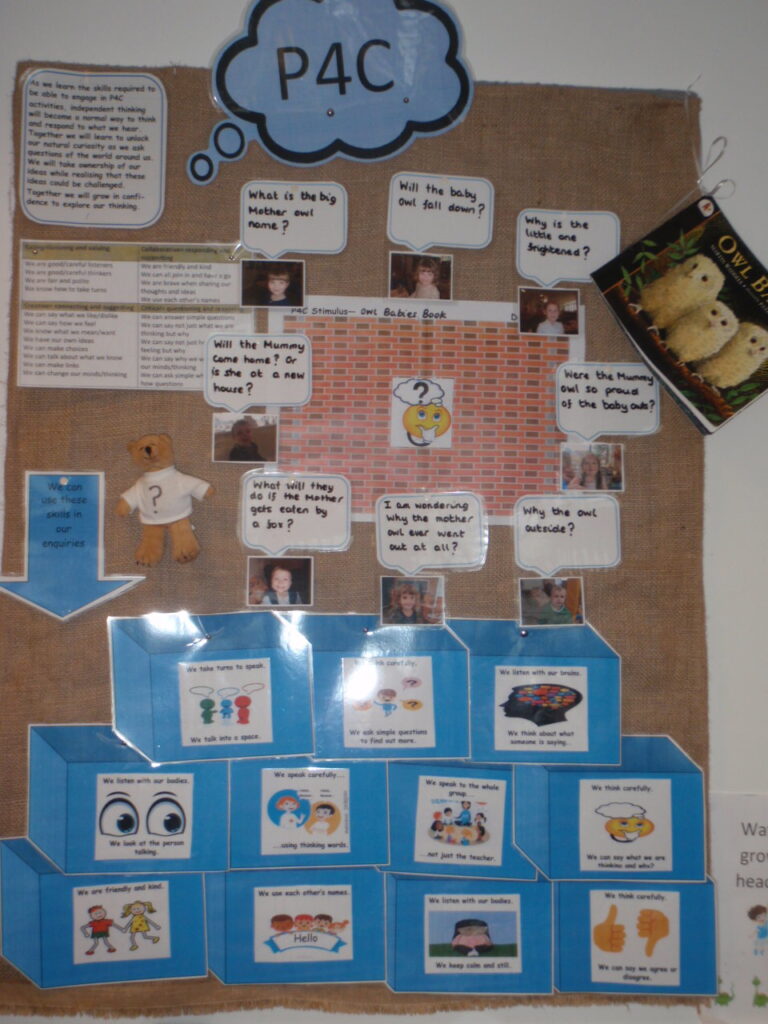
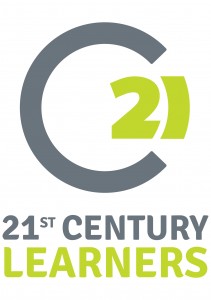
November 17th, 2023 at 18:52
Such an inspiring article. Thanks, Neil. I will send this on to colleagues.
November 21st, 2023 at 12:04
I absolutely agree with Topsy. It will give many early years staff the confidence to integrate P4C into their settings, I’m sure.
May 10th, 2024 at 20:06
Every teacher needs to read this.Every child deserves an opportunity to think wider and express themselves in their own words
August 13th, 2024 at 10:12
Very glad that I was reminded by Topsy to re-read and I will forward to all my staff. Thank you. Excellent and inspiring.
Wendy